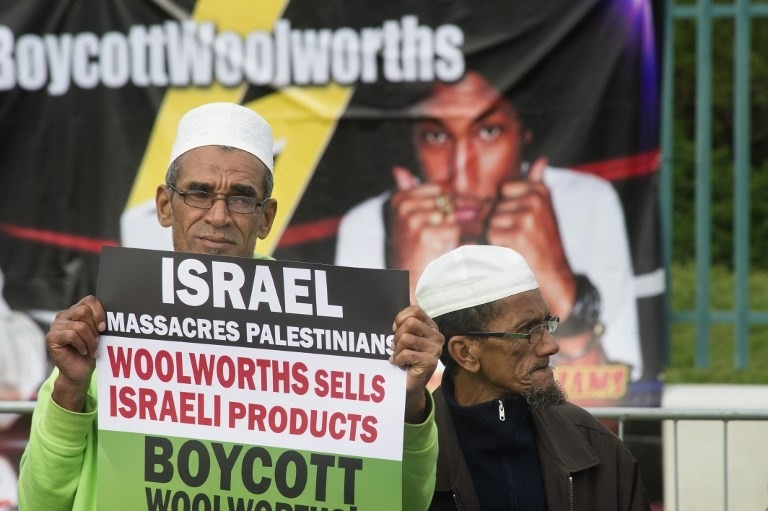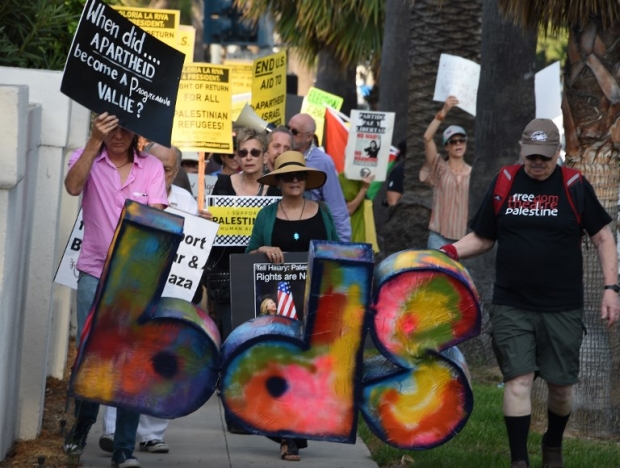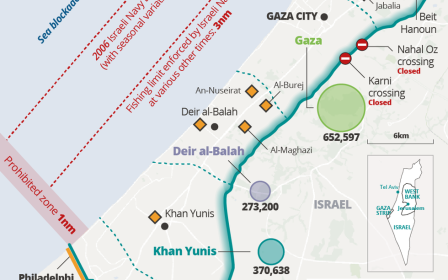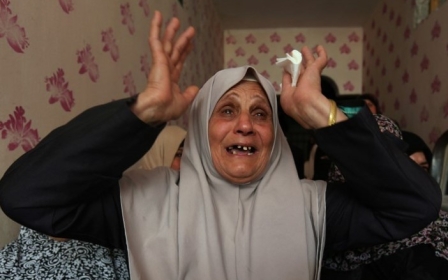Can BDS copy success of anti-apartheid movement?

In 2015, we published the results of a study on unarmed Palestinian resistance to the Israeli occupation. Unfortunately, one of our major findings was that despite all the protests and legal work by Palestinian nonviolent activists, they failed to exercise any noticeable influence on Israeli opinion leaders or the Israeli public in general.
We found some grounds for hope when we turned our attention to the ways in which the conflict was being internationalised, with the growth of solidarity networks around the globe. One of the prime drivers of this growth has been the lethal violence inflicted on the inhabitants of the Gaza Strip by Israel in a series of wars.
Of equal significance in the development of the transnational solidarity networks has been the advocacy work by thousands of concerned individuals and groups who have spent time in the occupied Palestinian territories, witnessing first-hand the reality of the everyday violence and humiliation inflicted on Palestinians by Israeli soldiers and settlers.
The flight of a boomerang
We likened the internationalisation process to the flight of a boomerang, originating when unarmed Palestinian resisters send out messages through their solidarity networks in the hope of generating enough pressure to impact the Israeli public and policymakers. In recent years, activists within these solidarity networks have used authoritative, eyewitness accounts of human rights violations to strengthen their presentation of the Palestinian issue as one involving a gross abuse of universal human rights, in an effort to ultimately reach decision-makers higher up the vertical ladder of influence within their respective countries.
The most significant boomerang-throwing exercise undertaken by Palestinians in recent years emerged from a meeting of Palestinian civil society organisations in July 2005, after which a call was issued for a worldwide boycott, divestment and sanctions (BDS) campaign against Israel. Its core demands include the end of Israel's occupation of Arab land, the recognition of the rights of Palestinian citizens of Israel, and the acknowledgement of Palestinians’ right of return.
The absence of any unified leadership within the Palestinian political domain has helped to create a diverse range of views about the desirable outcome of the Palestinian liberation struggle
The BDS campaign was inspired by and modelled on aspects of the worldwide anti-apartheid movement of the 70s and 80s, and it would seem that the success of the South African freedom struggle has also served as a source of hope for Palestinian activists and their international solidarity networks.
As engaged academics committed to nonviolence as a means of change, we felt it would be worthwhile to explore what grounds there might be for believing that BDS could one day emulate the success of the global anti-apartheid movement (AAM).
We approached this by identifying the key features of AAM that enabled it to exert the kind of leverage necessary to play such an important role in dismantling the apartheid system in South Africa and installing Nelson Mandela as president in 1994. Three groups of factors seem of particular importance: internal, ideational and contextual.
Internal factors
The AAM took its lead from the African National Congress (ANC), which was recognised as embodying the unified and legitimate leadership of the liberation struggle in South Africa.
In the Palestinian case, the Palestine Liberation Organisation and the Palestinian National Council have exercised a leadership function, but since the Oslo Accords and the establishment of the Palestinian Authority (PA), there has been no effective leadership to provide direction and coherence to wider networks of support and solidarity.
The ongoing division between Fatah and Hamas remains a significant handicap, despite several attempts at "reconciliation" over the past decade and talk of establishing a unity government. The lack of a unified leadership has had a debilitating effect on international solidarity networks.
In the South African context, the vision of "one person, one vote" united activists inside and outside the country who envisaged a future society and state based on equal civil and political rights for all citizens. By contrast, BDS has failed to present an inclusive vision than can be shared by Israeli Jews.
Ideational factors
Throughout the period when AAM was active, the protagonists on either side were involved in what can be characterised as a framing contest, each seeking to present their target in as unsavoury and damaging a light as possible; AAM emerged victorious.
The South African government tried to taint the ANC and its supporters as part of an international communist conspiracy that threatened the stability of the whole southern region of the African continent.
In turn, AAM succeeded in presenting a clear morality tale in which the South African regime was portrayed as a privileged white minority dominating and exploiting a black majority that was denied the most basic of human rights.
By contrast, the target of BDS appears to be a significant section of Israeli Jews - and Jews historically have been a vulnerable and persecuted minority, in relation to which Europe carries considerable historical guilt. As a consequence, the transnational Palestinian solidarity movement does not yet have recourse to a morality tale with the same kind of framing power as that presented and reproduced by AAM.
Contextual factors
By the 1980s, the support of the Reagan regime in Washington had become a major target for AAM. A key factor that contributed to Washington's eventual withdrawal of support from the apartheid regime was the realisation that South Africa's strategic role as a bulwark against communism sweeping through the African continent in the 80s was no longer significant.
Another factor that played a part in bringing South Africa to the negotiating table was the fact that its white minority needed the black majority as a workforce. Indeed, the black trade unions under the Congress of South African Trade Unions became a powerful instrument of resistance and a source of pressure that helped to dismantle apartheid from within.
Unlike South Africa in the 1980s, Israel in the current decade remains in reasonable economic and financial health. Moreover, there is no indication that its prime international sponsor in Washington is questioning its preparedness to continue bankrolling right-wing Israeli governments that make little secret of their lack of interest in pursuing what the majority of the world would consider to be a substantive peace process.
- Dr Marwan Darweish is a principal lecturer at the Centre for Trust, Peace and Social Relations at Coventry University. His research focuses on peace processes, conflict transformation and nonviolence, and he has extensive experience across the Middle East region, with a special interest in Palestine and Israel. He is a Palestinian from Umm El Fahem within the 1948 borders.
- Andrew Rigby is an emeritus professor of peace studies at Coventry University.
The views expressed in this article belong to the author and do not necessarily reflect the editorial policy of Middle East Eye.
Photo: A Muslim man holds a placard reading 'Israel massacres Palestinians. Woolworths sells Israeli products' in Cape Town in 2015 (AFP).
This article is available on Middle East Eye French edition.
Middle East Eye propose une couverture et une analyse indépendantes et incomparables du Moyen-Orient, de l’Afrique du Nord et d’autres régions du monde. Pour en savoir plus sur la reprise de ce contenu et les frais qui s’appliquent, veuillez remplir ce formulaire [en anglais]. Pour en savoir plus sur MEE, cliquez ici [en anglais].





